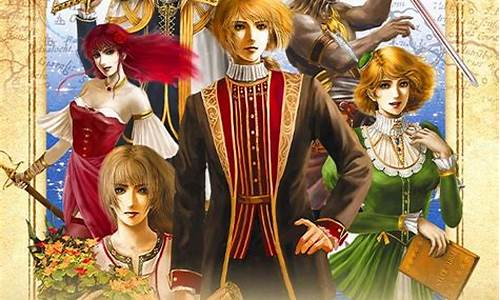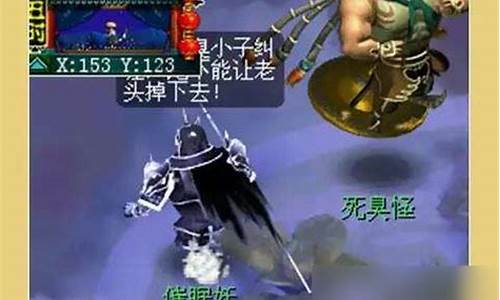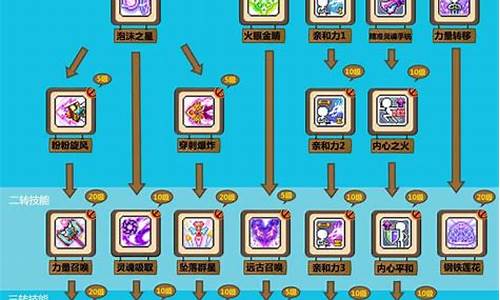埃及攻略英文_埃及 攻略_1
大家好,今天我来给大家讲解一下关于埃及攻略英文的问题。为了让大家更好地理解这个问题,我将相关资料进行了整理,现在就让我们一起来看看吧。
1.急需~~埃及金子塔的英文导游词
2.去埃及旅游需要注意事项去埃及旅游攻略
3.《植物大战僵尸2》古埃及第五关攻略
4.埃及金字塔的英文介绍及翻译100词以内,不要过难
5.埃及有什么好吃的英文版
6.用英文介绍埃及 要短点的

急需~~埃及金子塔的英文导游词
埃及金子塔的英文介绍(导游词):
Pyramid of Giza
It is the one and only Wonder which does not require a description by early historians and poets. It is the one and only Wonder that does not need speculations concerning its appearance, size, and shape. It is the oldest, yet it is the only surviving of the Seven Ancient Wonders. It is the Great Pyramid of Giza.
Location
At the city of Giza, a necropolis of ancient Memphis, and today part of Greater Cairo, Egypt.
History
Contrary to the common belief, only the Great Pyramid of Khufu (Cheops), not all three Great Pyramids, is on top of the list of Wonders. The monument was built by the Egyptian pharaoh Khufu of the Fourth Dynasty around the year 2560 BC to serve as a tomb when he dies. The tradition of pyramid building started in Ancient Egypt as a sophistication of the idea of a mastaba or "platform" covering the royal tomb. Later, several stacked mastabas were used. Early pyramids, such as the Step Pyramid of King Zoser (Djoser) at Saqqara by the famous Egyptian architect, Imhotep, illustrate this connection.
The great pyramid is believed to have been built over a 20 year period. The site was first prepared, and blocks of stone were transported and placed. An outer casing (which disappeared over the years) was then used to smooth the surface. Although it is not known how the blocks were put in place, several theories have been proposed. One theory involves the construction of a straight or spiral ramp that was raised as the construction proceeded. This ramp, coated with mud and water, eased the displacement of the blocks which were pushed (or pulled) into place. A second theory suggests that the blocks were placed using long levers with a short angled foot.
Throughout their history, the pyramids of Giza have stimulated human imagination. They were referred to as "The Granaries of Joseph" and "The Mountains of Pharaoh". When Napoleon invaded Egypt in 1798, his pride was expressed through his famous quote: "Soldats! Du haut de ces Pyramides, 40 si鑓les nous contemplent". (Soldiers! From the top of these Pyramids, 40 centuries are looking at us)
Today, the Great Pyramid is enclosed, together with the other pyramids and the Sphinx, in the touristic region of the Giza Plateau. Also in the area is the museum housing the mysterious Sun Boat, only discovered in 1954 near the south side of the pyramid. The boat is believed to have been used to carry the body of Khufu in his last journey on earth before being buried inside the pyramid. It may also serve him as a means of transportation in his afterlife journey according to Ancient Egyptian beliefs.
Description
When it was built, the Great pyramid was 145.75 m (481 ft) high. Over the years, it lost 10 m (30 ft) off its top. It ranked as the tallest structure on Earth for more than 43 centuries, only to be surpassed in height in the nineteenth century AD. It was covered with a casing of stones to smooth its surface (some of the casing can still be seen near the top of Khefre's pyramid). The sloping angle of its sides is 51 degrees and 51 minutes. Each side is carefully oriented with one of the cardinal points of the compass, that is, north, south, east, and west. The horizontal cross section of the pyramid is square at any level, with each side measuring 229 m (751 ft) in length. The maximum error between side lengths is astonishingly less than 0.1%.
The structure consists of approximately 2 million blocks of stone, each weighing more than two tons. It has been suggested that there are enough blocks in the three pyramids to build a 3 m (10 ft) high, 0.3 m (1 ft) thick wall around France. The area covered by the Great pyramid can accommodate St Peter's in Rome, the cathedrals of Florence and Milan, and Westminster and St Paul's in London combined.
On the north face, is the pyramid's entrance. A number of corridors, galleries, and escape shafts either lead to the King's burial chamber, or were intended to serve other functions. The King's chamber is located at the heart of the pyramid, only accessible through the Great Gallery and an ascending corridor. The King's sarcophagus is made of red granite, as are the interior walls of the King's Chamber. Most impressive is the sharp-edged stone over the doorway which is over 3 m (10 ft) long, 2.4 m (8 feet) high and 1.3 m (4 ft) thick. All of the interior stones fit so well, a card won't fit between them. The sarcophagus is oriented in accordance with the compass directions, and is only about 1 cm smaller in dimensions than the chamber entrance. It might have been introduced as the structure was progressing.
New theories concerning the origin and purpose of the Pyramids of Giza have been proposed... Astronomic observatories... Places of cult worship... Geometric structures constructed by a long-gone civilization... Even extraterrestrial-related theories have been proposed with little evidence in support... The overwhelming scientific and historic evidence still supports the conclusion that, like many smaller pyramids in the region, the Great Pyramids were built by the great Ancient Egyptian civilization off the West bank of the Nile as tombs for their magnificent Kings... Tombs where Khufu, Khefre, and Menkaure could start their mystic journey to the afterlife.
去埃及旅游需要注意事项去埃及旅游攻略
简单~~~~~~
Cairo Overview
Cairo, which Egyptians proudly call the ‘Mother of All Cities’, spreads along the banks of the River Nile for 40km (25 miles) north to south, the largest metropolis in Africa. Travelers through the ages have been both fascinated and repelled by Cairo. Visitors are intrigued by its twisting streets, medieval buildings, oriental bazaars and Islamic architecture of carved domes and sculpted minarets, while being appalled by its dirt, pollution, noise, crowds and constant demands for baksheesh (gratuities). Paying baksheesh is the local custom, however, so expect to give little advertisement
Pick-up City:Pick-up:
JanFebMarAprMayJunJulAugSepOctNovDec12345678910111213141516171819202122232425262728293031Drop-off:
JanFebMarAprMayJunJulAugSepOctNovDec12345678910111213141516171819202122232425262728293031
and often. Culture shock is part of the experience of Cairo and can at times be wearing. But as is written in the ancient tales of the 1001 Nights, ‘He who hath not seen Cairo, hath not seen the world’.
Cairo is a disorienting place but most of the city lies on the east bank of the River Nile. Visitors often feel most comfortable finding their feet in the Westernised downtown district of central Cairo around Midan Tahrir (Liberation Square). This is a public transport hub, separated from the Nile by the massive Nile Hilton Hotel. Here too is the city center’s main attraction, the Egyptian Museum. Opposite downtown is the Nile island of Gezira, with the island of Roda just to the south. The Pyramids of Giza, however, are on the west bank of the river, some 18km (11 miles) from the center. Old Cairo lies south of central Cairo, while Islamic Cairo encompasses a large area to the east. The city is growing rapidly, both in terms of population and geographical area, with new suburbs expanding on its outskirts, especially into the Eastern Desert. Northwest of the city center, near the airport, Heliopolis is home to many of Cairo’s wealthy (and the Presidential Palace), while to the west, the middle-class suburb of Giza has expanded to within sight of the Pyramids.
Although Cairo today is Egypt’s capital and largest city, teeming with some 18 million people, its position of prominence in the long timeline of Egyptian history is relatively recent. It did not even exist when the pyramids at Giza were constructed. Then, the town of Memphis, 24km (15 miles) to the south, was the Pharaonic capital. Cairo was not founded until the Romans rebuilt an old Persian fortress along the Nile in AD116, which was known as Babylon-in-Egypt, in today’s Old Cairo district.
From the latter ninth century, a succession of Arab rulers made their mark on the city: Ibn Tulun built his royal city el-Qatai, the Fatimids built the walled city of el-Qahira, from which Cairo takes it name. In the 13th century, the Mamluks, a caste of Turkish soldier-slaves, rose to power, then the Ottomans, the French under Napoleon and finally the British ruled in their turn. The birth of modern Cairo came in 1863, when the ruler Ismail expanded the city along the Nile in the style of the great European cities. After the country returned to Egyptian rule in 1952, Cairo rose to the forefront as the capital of the Arab world.
Cairo is also called the ‘City of 1000 Minarets’ and it is the exotic skyline of graceful domes and towering minarets that casts a spell of magic over the grinding reality of the metropolis. Most visitors come to see the great Pyramids of Giza, the treasures of Tutankhamun’s tomb and other wonders in the Egyptian Museum of Antiquities, as well as to shop in the sprawling Khan al-Khalili marketplace. There are also dozens of mosques, Coptic churches, smaller museums and winding streets to explore. This tourism is Egypt’s key source of foreign income, while the public sector, including government and social services and the military, makes up the largest ‘industry’. The city is also the center of a growing trade, finance and insurance sector.
During the summer, temperatures in Cairo can climb to 38 degrees Celsius, though the low humidity is some consolation. The best time to visit is between October and April. Occasional downpours occur in January and February, while during March and April the khamseen, a strong, hot, dry wind, blows in periodically from the desert.
还有个版本
Dubbed the Mother of the World, Cairo has been the largest city in Africa and the Middle East for most of the last millennium. Its population, now estimated at 20 million, continues to swell, and the city gobbles up more farmland and desert every year to accommodate the growth.
During rush hour in Tahrir Square, nothing moves but car horns. Once the gridlock breaks, a smoke-spewing bus jammed with riders overtakes a donkey-drawn vegetable cart, a bicycle beats out a stalled Mercedes and two taxis collide. Women clasp each other's hands to cross the street, gracefully slipping their bodies between passing cars with a hair's breadth to spare.
The amount of green space per resident is said to be smaller than a child's palm. Breathing the city's air pollution is like smoking two packs of cigarettes a day. Despite the despair and madness of Cairo, foreigners have flocked here since the dawn of leisure travel. Travelers are seduced by the romance of Egypt's pyramids and desert, which evoke a feeling of eternity few can deny.
Cairo has a timeless quality most travelers relish. There's perhaps no better example than Khan el-Khalili, the city's 600-year-old bazaar. Goldsmiths, woodworkers, and tentmakers in the Khan carry on crafts passed down since medieval times.
Shades of wealth and modernity exist in Cairo. You'll see working women wearing chic Chanel headscarves to match their gold and black pantsuits, and hotels as grand as anything in Manhattan. But once you leave the faint glimmer of downtown Cairo and venture into its labyrinthine neighborhoods, you'll wonder where time has gone.
Life in Cairo revolves around family and religion. Almost without exception, children remain with their families until marriage. About 90 percent of Egypt's population is Muslim; the rest are mainly Christian. Reflections of Islam are everywhere: in Egyptian speech and dress, on the radio and television, and with the unforgettable call to prayer that bellows from the city's mosques five times a day.
Cairo is really a jigsaw puzzle of the past, and each district tells a different chapter in Egypt's history, from the pharaonic dynasties to the 20th-century British occupation. The area was first settled some 2,500 years ago, when Persians put a fortress called Egypt-in-Babylon near what is now known as Old Cairo.
Old Cairo maintains some of the world's oldest Christian churches, as Egypt was among the first nations to embrace the faith. Saint Mark the Apostle began preaching to Egyptians in A.D. 35, although the Roman Empire didn't accept Christianity until the 4th century. The Coptic Christians living in Old Cairo today descend from these early worshipers.
Cairo's Muslim roots go back to A.D.640, when the Arab general Amr led 3,500 horsemen into Egypt under the banner of Islam. The army founded Fustat, "City of the Tent," near the old fortress at Babylon. For the next thousand years, a succession of dynasties ruled over Egypt as part of the Islamic Empire. Cairo got its modern name when the Fatimids seized control in A.D.969. Three of the 60 original gates to this walled city, El Qahira, still stand today.
Orienting yourself in Cairo requires patience. Streets aren't always marked and Egyptians are notorious for creative directions. Most of the city lies to the Nile's east. On the Nile itself are two islands. The northern island is Gezira, whose northern half is called Zamalek; to the south is Roda Island. Just east of the river is Tahrir Square, the hub of downtown Cairo. Garden City, where many embassies are located, is adjacent to Tahrir Square.
To Tahrir's northeast are Ramsis train station and el-Azhar bus station. Residential neighborhoods to the north are Shubra, Abbasiyya, and Heliopolis. South of Tahrir is Sayida Zeinab, or Islamic Cairo, and south of that is Old Cairo, also known as the Coptic Quarter. Even further south is the upper-class Maadi
《植物大战僵尸2》古埃及第五关攻略
埃及也是属于一个比较出名的旅游胜地,给人一种神秘感,但是不管是去到哪里旅游都是需要注意一些东西的,本篇小编就来跟大家讲一讲。1.砍价砍一半埃及人一般看你是游客马上会给你加价很多。我有一个埃及同事说有次他被当成游客,价格直接翻了3倍。所以不要怕划价。我们都是直接砍一半的,如果他们不同意,拔腿就走。如果店主叫住你,说明肯定有戏。不是有戏,是肯定能砍到一半。
2.随时备点零钱我们有次坐小马车,说好了20的,到了地方给他50,他居然说没钱找,拿出一张10埃镑和一张10块钱人民币想把我们打发了。当时我们太多很坚决,说去给他换钱,反复纠缠了很久,他终于认输了,从包里拿出了零钱找我们。如果身上有零钱就没这种事了。
3.关于租车在开罗你就不要想着租车了,第一太堵,第二车开的都跟疯了似的。我们坐出租车的时候,感觉别的车离我们最近的时候只有5cm,近的不可思议。如果想在赫尔格达或谢姆沙伊克租车还是可以的。但需要国际驾照!美国驾照不行!
4.国际学生证
很多博物馆,神庙学生都半价,理论山人家只收国际学生证。我们来的匆忙,只有美国学生证。很多地方查的不严,也都能用,上面有英文,最好有到期日期。
5.谨防热情如果有人对你特别热情,英语还特好,那他肯定是各收费导游
我们在哈里集市遇到一个。一开始我们还觉的,哇塞,埃及除了坑蒙拐骗的小商小贩意外,还是有热情的群众的。“热情群众”带我们去了清真寺逛了市场,我们本来也想给他几十埃镑小费,没想到他结束时居然找我们要200。最后砍到60。倒不是我们雇不起导游,只是这种没有事前约定,最后突然找你要钱的行为,让人很反感。
6.过马路要小心人行横道几乎没有,我只看到过一次。特别是开罗,车开的都太快了。我们都是跟着本地人过马路的。自己根本过不去。
7.女生头巾和长衣长裤我全程没有带头巾,只有在参观清真寺时带了一小会。由于天气原因我们去的时候还是25度左右,我全程很少短袖。在红海变还是有穿比基尼的。那边外国人比较多,也比较开放,没有觉得有什么不安全的。性骚扰我们没有遇到。可能是因为全程都有男性在旁边吧。
8.出租车价格
我们一路去了开罗,卢克索,谢姆沙伊克。大部分时间都是晚上到,白天走。经验就是晚上到了机场打车去市里的钱,大约是回程的两倍。我们的基本价格是
开罗:去市里110,回机场(打表):50
卢克索:去市里80,回机场:40
谢姆沙伊克,去市里150,回机场:70
平时在埃及市里打车都是打表的,超便宜。
9.对于纠缠你的小贩和他讲中文,假装听不懂他说什么。不要说英语,否则没个完。
总体来说我觉得埃及还算安全,虽然脏乱差,虽然坑蒙拐骗多。
埃及金字塔的英文介绍及翻译100词以内,不要过难
这次的第五关是一个教程 关卡 ,教玩家如何 使用收费道具 ,没有难度,但是我觉得还是简单说一下各个 收费道具 的作用吧。当然,在当前关卡使用的收费道具都是免费使用的,之后的就要收费了。植物大战僵尸 2英文版埃及第5关攻略
这一关中,一共会教大家3种金手指系统玩法,只需要根据系统给予的提示去做即可。
剪刀手
剪刀手,顾名思义就是通过两个手指来掐死僵尸,而其中的绿色框框就是给予你的时间限制,超过了这个时间就无法使用剪刀手了。
浮空指
浮空指,就是通过一个手指让僵尸浮空,然后再清理走,就如同清扫垃圾一样。具体做法就是先用手指扫一下僵尸,让它浮空,然后再扫一下,僵尸就会被清理出场外,效果非常不错!
电击指
电击指,就是让你的指头变成点击抢,你点到哪个僵尸,僵尸就会受到攻击,最后被闪电电死化作一堆骨灰。
怎样,大家学会了吗?下面就一起来试试吧!
埃及有什么好吃的英文版
built 4,000 years ago, the three great pyramids at giza, in the egyptian desert remain the most colossal buildings ever constructed.
the pyramids were built by egyptians under the orders of the egyptian leader, whose title was pharaoh.
the pharaohs may have set out to build magnificent tombs for themselves, but in the end they created monuments to human potential. there's a universal message in the pyramids. the pyramids be long to egypt, but the pyramids also belong to the world. that's why we can all identify the pyramids as an early monument of human greatness.
for being a man made wonder that has survived the sands of time1, the pyramids rise to the n umber two spot.
矗立在埃及沙漠中吉萨的三座大金字塔建于4000年前,它们一直都是有史以来最宏大的建筑。
金字塔是埃及人在他们的领袖--名为法老--的命令下建造的。
法老们的初衷是为自己建造豪华的陵墓,而最终他们创建的却是昭示人类潜能的纪念碑。金字塔蕴含着一种共同的信息,金字塔属于埃及,但它也属于世界。因此我们完全可以把金字塔作为展示人类伟大文明的早期纪念物。
由于历经岁月的沧桑,金字塔位列十大人工奇观排行榜第2名。
用英文介绍埃及 要短点的
Fuul_______埃及非主流国菜:Description?:
Serve?with?bread?and?tamia.
Fuul是把蚕豆浸泡去皮加配料及香料用小火炖烂,根据不同喜好配料有黄油或橄榄油与番茄,有时还会加上柠檬、蛋以及洋葱调味制成的糊状菜。可以把大饼撕块来沾着Fuul吃。
食谱如下:
===============
Ingredients?:配料
*?500g?fuul?musri?(greenish-brownish-coloured?beans)
*?1?tbsp?salt
*?2?dates?(optional)
*?1/2?cup?sesame?seed?oil
*?1?tomato?(optional)
*?1?Onion?(optional)
*?1?green?pepper?(optional)
*?50g?jibna?(feta?Cheese)
*?1?tsp?shottar?-?chili?powder?(optional)
*?2?eggs?(optional)?
Directions工艺?:
1.?Soak?beans?in?water?for?at?least?3-hours.
2.?Drain?beans?and?put?in?water?and?cook?in?pressure?cooker?until?soft.
3.?Pour?into?a?bowl?and?lightly?mash?with?an?empty?Pepsi?bottle.
4.?Add?chopped?tomato,?Onion,?green?pepper,?fried?egg,?salt,?jibna,?oil?and?shottar?if?desired.
==========
埃及英文介绍
==========
Egypt is a country in North Africa. Egypt is one of the most populous countries in Africa and the Middle East. About half of Egypt's residents live in urban areas, with the majority spread across the densely-populated centres of greater Cairo, Alexandria and other major cities in the Nile Delta.
Egypt is famous for its ancient civilization and some of the world's most famous monuments, including the Giza pyramid complex and its Great Sphinx. The southern city of Luxor contains numerous ancient artifacts, such as the Karnak Temple and the Valley of the Kings. Egypt is widely regarded as an important political and cultural nation of the Middle East. The Nile Valley was home to one of the oldest cultures in the world, spanning three thousand years of continuous history.
Most people who think of Egypt think of antiquities, but Egypt offers much more. Certainly it is a prime location to see our great heritage from the ancient world, including Pyramids and wonderful temples, but it is also part of the Holy Land, and tours to Christian and other religious monuments are popular. Yet Egypt also offers nature and desert treks, great scuba diving and even golf, fishing and birding expeditions. One may choose to relax on the wondrous Egypt Red Sea or Sinai coasts, take in the high culture of Cairo, or even leisurely float down the Egyptian Nile on a luxurious river boat.
今天关于“埃及攻略英文”的讲解就到这里了。希望大家能够更深入地了解这个主题,并从我的回答中找到需要的信息。如果您有任何问题或需要进一步的信息,请随时告诉我。
声明:本站所有文章资源内容,如无特殊说明或标注,均为采集网络资源。如若本站内容侵犯了原著者的合法权益,可联系本站删除。










